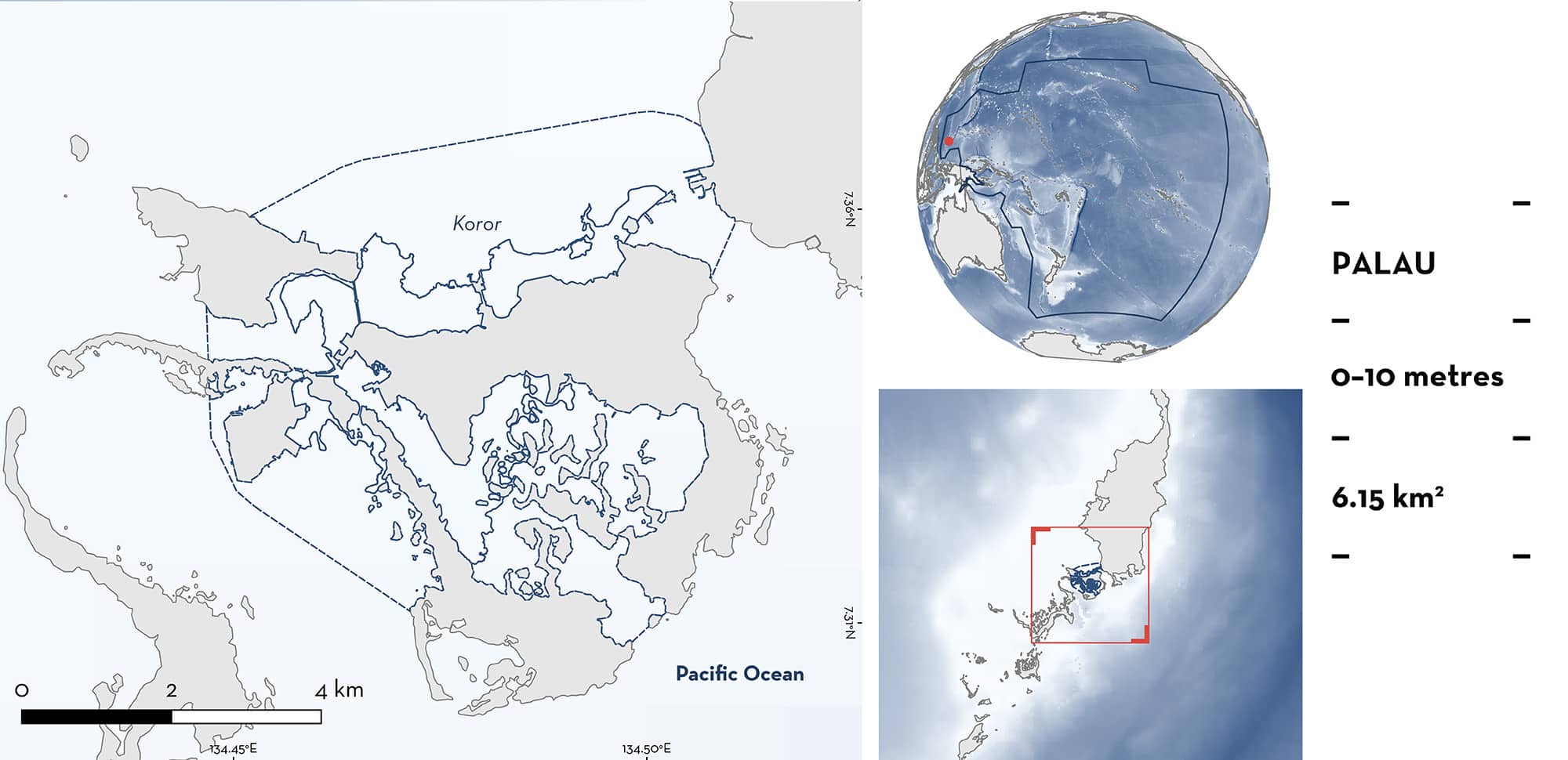ISRA FACTSHEETS
ISRA FACTSHEETS
NEW ZEALAND & PACIFIC ISLANDS REGION
Koror
Summary
Koror is located in the Koror State of Palau. This coastal area is characterised by a shallow sandy substrate with a moderate number of basins covered by seagrass. Within this area there are: threatened species and undefined aggregations (Spotted Eagle Ray Aetobatus ocellatus).
Download factsheet
Koror
DESCRIPTION OF HABITAT
Koror is located in the Koror State of Palau. This coastal area is characterised by a shallow sandy substrate with a moderate number of basins covered by seagrass, mostly Tape Seagrass Enhalus acoroides (Colin 2009). The area also includes a smaller proportion of shallow coral reef flats with the upper limit of coral growth dictated by the tides (Colin 2009). Most of the area is dry during low tide. In Palau, the tidal amplitude ranges ~1–2 m, with twice daily tides (Colin 2009).
This Important Shark and Ray Area is benthic and pelagic and is delineated from surface waters (0 m) to 10 m based on the bathymetry of the area.
CRITERION A
VULNERABILITY
One Qualifying Species considered threatened with extinction according to the IUCN Red List of Threatened Species regularly occurs in the area. This is the Endangered Spotted Eagle Ray (Finucci et al. 2024).
CRITERION C
SUB-CRITERION C5 – UNDEFINED AGGREGATIONS
Koror is an important area for undefined aggregations of one ray species.
Between 2004–2009, aggregations of 5–20 neonate and/or young-of-the-year (YOY) Spotted Eagle Rays were occasionally observed from the shore nearly every week from June–October. Spotted Eagle Rays were visually estimated to be between 40–60 cm disc width (DW; T Harel-Bornovski pers. obs. 2004–2009). Size-at-birth of Spotted Eagle Rays ranges from 18–50 cm DW (Last et al. 2016), confirming observations were of neonate or YOY individuals. Between 2009–2024, aggregations of approximately five Spotted Eagle Rays of all size classes were seen year-round and were observed almost every week (T Harel-Bornovski pers. obs. 2009-2024). Aggregations of at least 8–12 Spotted Eagle Rays have also been shared on social media channels (e.g., June 2017; September 2023). A record from 2017 shows a mating attempt. An additional record shared shows a neonate in 2011 within the area, suggesting the species uses the area for reproductive purposes. Spotted Eagle Rays were also recorded feeding within the area, as individuals or in pairs (T Harel-Bornovski pers. obs. 2009–2024). Although the species is commonly recorded across many dive sites in Palau, this is the only area with regular observations of aggregations (T Harel-Bornovski pers. obs. 2009–2024). Further information is required to understand the nature and function of this aggregation.
Download factsheet
SUBMIT A REQUEST
ISRA SPATIAL LAYER REQUEST
To make a request to download the ISRA Layer in either a GIS compatible Shapefile (.shp) or Google Earth compatible Keyhole Markup Language Zipped file (.kmz) please complete the following form. We will review your request and send the download details to you. We will endeavor to send you the requested files as soon as we can. However, please note that this is not an automated process, and before requests are responded to, they undergo internal review and authorization. As such, requests normally take 5–10 working days to process.
Should you have questions about the data or process, please do not hesitate to contact us.


